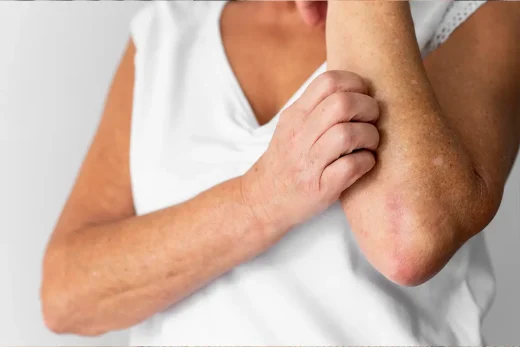Acanthosis nigricans is a fairly common pigmentation problem. It is a skin disease that causes the skin to become darker and thicker.
What is acanthosis nigricans?
This health problem is a skin condition that occurs as a result of certain diseases (such as diabetes). It is a skin problem in which the skin has a darker color and thickens. The most noticeable symptom is that it forms dark skin spots with a thick and velvety texture. Odor and itching may occur on the affected skin areas. It occurs more often in the skin folds.
Where does acanthosis nigricans appear?
Facial acanthosis nigricans usually cover the face and neck area. However, nigricans can be seen under the breast area. The acanthosis nigricans neck’s can move downwards, covering a larger area up to the chest. These patches may appear on other areas, such as the:
- armpits
- back of your neck
- groin, particularly in creases and skin folds
- elbows
- navel
- palms
- soles of the feet
- underneath female breasts
- face
- knees
- knuckles
- lips
Acanthosis nigricans causes
This health problem might be related to:
- stomach cancer, or gastric adenocarcinoma
- obesity
- diabetes
- adrenal gland disorders, such as Addison’s disease
- disorders of the pituitary gland
- low levels of thyroid hormones
- high doses of niacin
- some types of stomach cancer
- genetics
Acanthosis nigricans symptoms
The main symptom of this health problem is dark spots that form on the body folds. Especially these are also very common in the face area. The formation of acanthosis nigricans under breast area is also frequently seen in patients. Other skin symptoms seen in this health issue include:
- Has a brown or black discoloration
- Itches
- Has a bad odor
- Feels velvety and thicker than the surrounding skin
- Has skin tags
- Dark neck
Diagnosis

First of all, if you have noticed that your skin is darkening, thickening and other symptoms, you should make an appointment with a skin specialist. This is usually harmless. However, the underlying condition may need to be treated. Your doctor can often diagnose this condition just by looking at the skin. He or she may ask you to have some tests to determine the cause of this skin change. The diagnosis of acanthosis nigricans pathophysiology disorders is also made in this way. In addition, some patients may be given an acanthosis nigricans pathology test. You may need to have the following tests to diagnose underlying diseases:
- Blood Biochemistry
- HbA1C test
- Skin biopsy
- X-ray
Risk factors
These are much more common in who patients have diabet and obesity. In addition this, if there is someone in your family who has diabetes or obesity, you may be more prone to this problem.
Acanthosis nigricans treatment
Treatment for this condition typically begins with treatment of the underlying disease. If the underlying disease is controlled or treated, the existing skin condition will disappear in a short time. You can treat this problem with acanthosis nigricans home remedies, laser treatments, and changes to certain life habits.
- Acanthosis nigricans weight loss:If you have this problem caused by obesity, losing weight can help you. For this, you need to adopt a healthy diet. Exercising regularly also speeds up your weight loss process.
- Stop medications: If you are experiencing this problem because of a medication you are using, stop taking the medication immediately. Be sure to inform your doctor about this problem.
- Have surgery:If this skin problem is triggered by a disease that needs to be treated surgically, having surgery will fix the problem.
Acanthosis nigricans laser treatment
Laser treatments are also widely applied as acanthosis nigricans cure. Laser treatment for acanthosis nigricans takes approximately 4-6 sessions. However, this situation differs from patient to patient. Because in one patient, the spots may be much lighter in color and darker in the other. Therefore, the duration of treatment varies according to the person.
If you have a few of the symptoms associated with this illness contact the Erdem Hospital call centre.
 English
English  Deutsch
Deutsch  Français
Français  Nederlands
Nederlands  Italiano
Italiano  Español
Español  Română
Română  Português
Português  Polski
Polski